p4332, p4132, i4132
Steven Dutch, Professor Emeritus, Natural and Applied Sciences,
Universityof Wisconsin - Green Bay
For the isometric space groups, we encounter a visualization problem. There is no longer a single principal symmetry direction we can look along. The diagonal 3-fold symmetry axes rotate the motif into planes perpendicular to the plane of the diagram so they are seen edgewise. So for isometric space groups, three modes of visualization are employed. First is an oblique drawing of the cubic unit cell with the R motif on a smaller cube. Second is an oblique drawing with stereograms replacing the small cube. The stereograms are drawn in standard crystallographic style without any attempt to represent the projections in perspective. Finally there is a view of the unit cell and stereograms viewed perpendicular to a face. For cases like screw axes where only one octant of the cube or stereogram might be present, only that octant is portrayed.
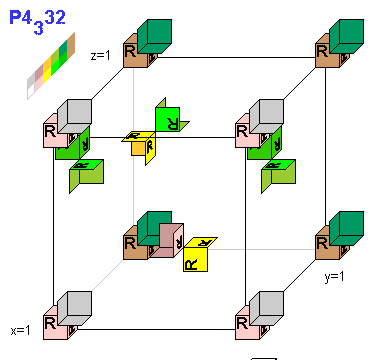 |
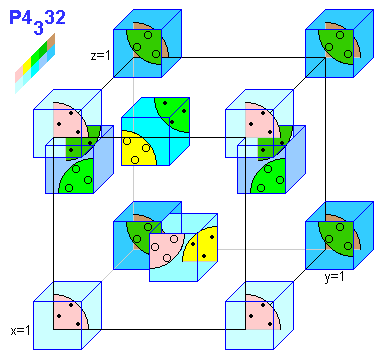 |
| 212 p4332 (+x,+y,+z);
(+z,+x,+y); (+y,+z,+x) |
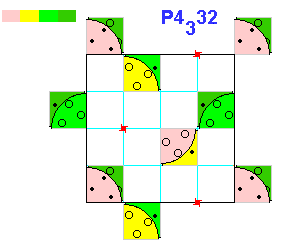 |
This group looks chaotic, but visualizing it is easy. All you do is sit there until little beads of blood form on your forehead. It helps if you try to draw it for a Web page. The pattern consists of groups of motifs arranged with 3-fold inversion symmetry. There are four sets, each 3* axis corresponding to one of the 3-fold axes of the unit cell. Each set consists of two opposing octants of the 432 symmetry pattern, with origins at opposing corners of a small cube 1/4 the size of the unit cell. Note that the octants face inward toward the center of each cube. This is shown in the upper right diagram.
What appears to be a breakdown in symmetry in the lower right diagram really is not. The pink octant is paired with an octant above the plane of the diagram (not shown) and the dark green octant is paired with an octant at the back of the unit cell (hidden by the frontmost pink one).
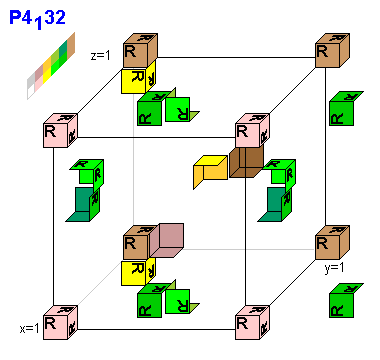 |
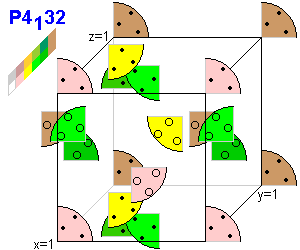 |
| 213 p4132 (+x,+y,+z);
(+z,+x,+y); (+y,+z,+x) |
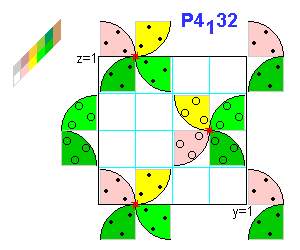 |
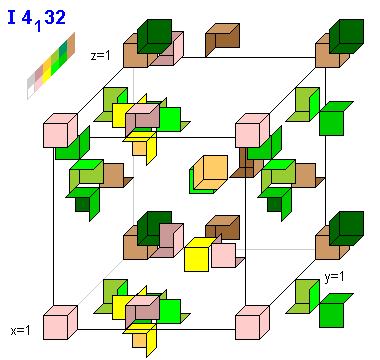 |
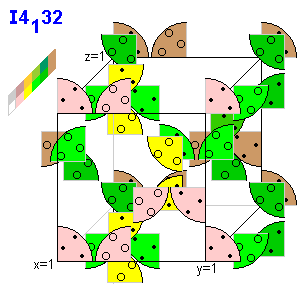 |
| 214 i4132 Origins: (0,0,0); (1/2, 1/2, 1/2) (+x,+y,+z); (+z,+x,+y); (+y,+z,+x)(1/2+x,1/2-y,-z);
(1/2+z,1/2-x,-y); (1/2+y,1/2-z,-x) |
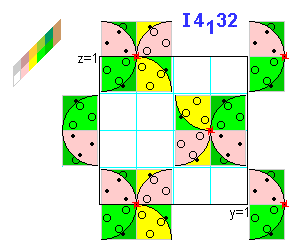 |
Return to Symmetry Index
Return to 3d-Space
Groups Index
Return to Crustal Materials (Mineralogy-petrology)
Index
Return to Professor Dutch's Home Page
Created 23 July 2001, Last Update 11 June 2020